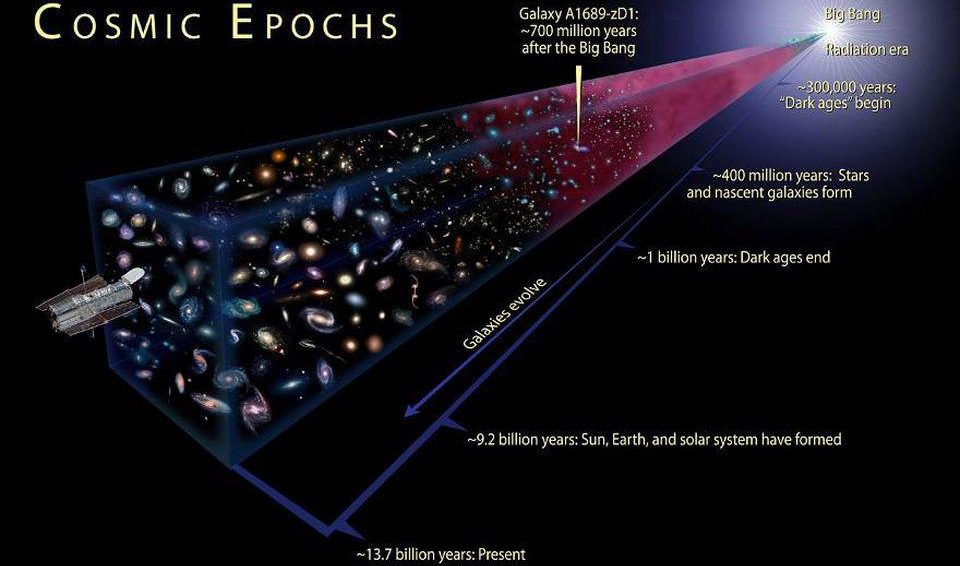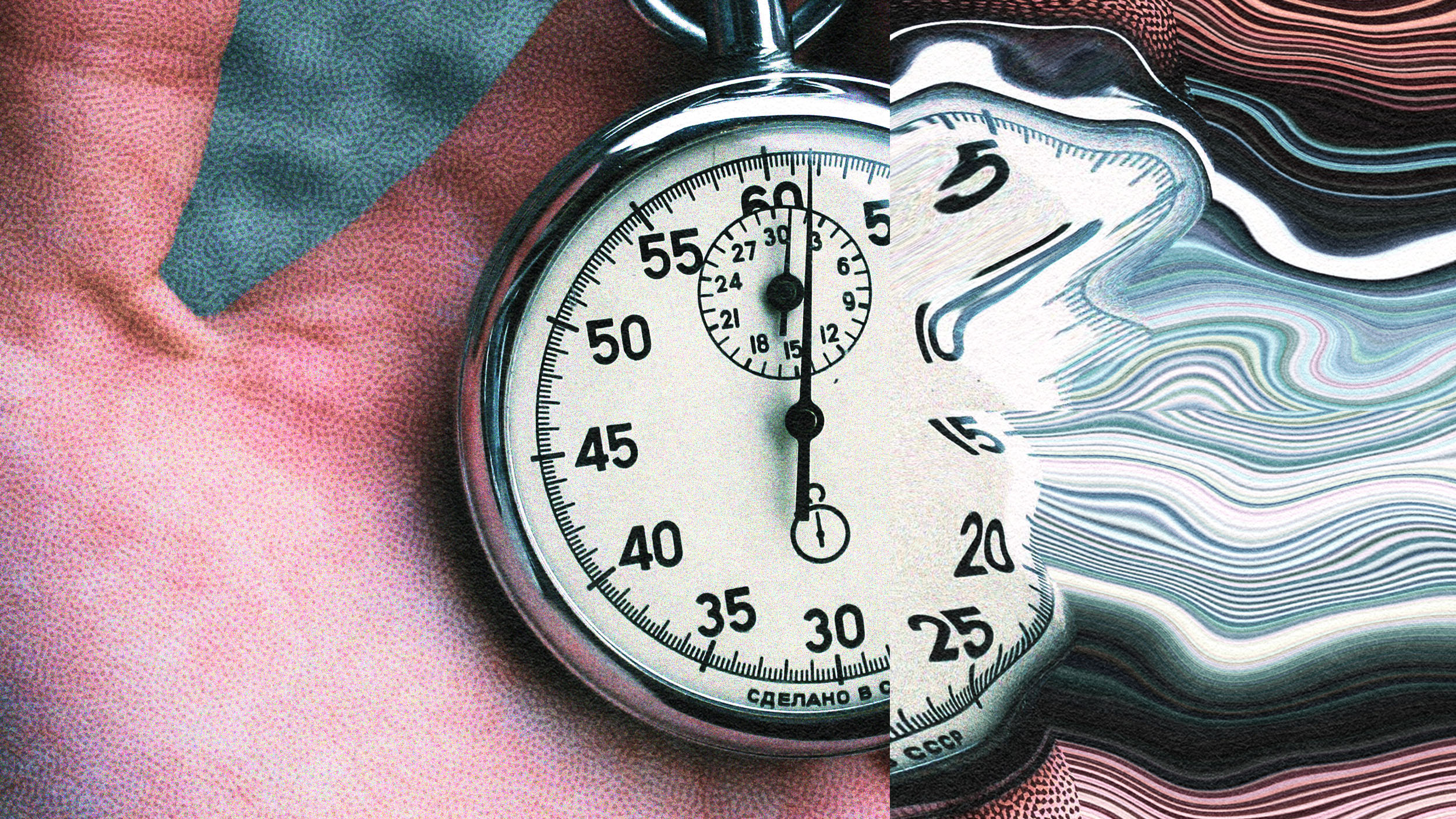Throwback Thursday: The Foolish Fallacy of Cold Fusion
And the undeniable physics of how fusion actually works.
Image credit: The FIRE Place, via http://fire.pppl.gov/.
“Between cold fusion and respectable science there is virtually no communication at all. …because the Cold-Fusioners see themselves as a community under siege, there is little internal criticism. Experiments and theories tend to be accepted at face value, for fear of providing even more fuel for external critics, if anyone outside the group was bothering to listen. In these circumstances, crackpots flourish, making matters worse for those who believe that there is serious science going on here.” –David Goodstein
I’m going to tell you a story that starts back in 1770, before not only the idea of nuclear fusion, but before atomic nuclei or even the modern theory of atoms existed. Instead, our story starts with the very first chess-playing automaton, Wolfgang von Kempelen‘s Turk.
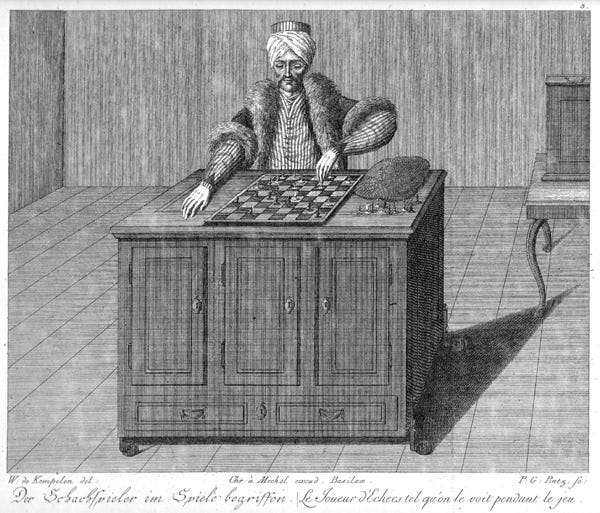
Nearly two centuries before the invention of the modern computer, the Turk was able to play a very strong game of chess, winning most of its games and defeating all but the world’s very top players at the time. Immediately, of course, it was believed to be a hoax, but many exhibitions of the machine seemed to prove it genuine, and the machine seemed to display not only remarkable chess skill, but also the ability to detect false moves. As one (defeated) opponent observed, his attempt at cheating,
“by giving the Queen the move of a Knight, but my mechanic opponent was not to be so imposed upon; he took up my Queen and replaced her in the square from which I had moved her.”
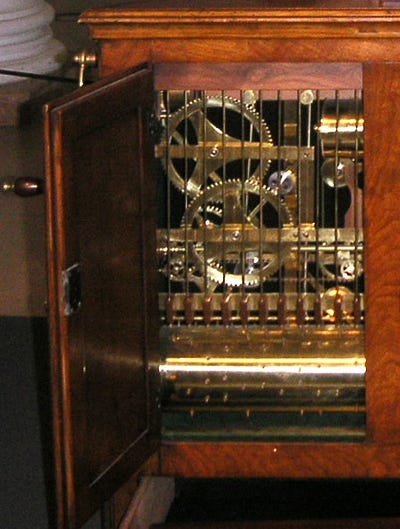
The Turk — which would be the ultimate steampunk invention today — required cranking by an external third party, and that action would result in the sound of a machine-cranking inside. In addition to the lower drawers, which contained a chessboard and pieces, there were six doors, three on the front and three on the back. Behind the left door, as shown above, was a set of interlocking metal gears, which turned after being wound. Behind the right two was a red cushion and open space, so that all doors could be opened and one could see clearly through the Turk.
After defeating all but the strongest regional competition, the Turk was taken around Europe, where it played in a great many exhibitions, including one against the strongest player of the day, the famed Andre Philidor. Despite the fact that the mechanical device was unable to defeat Philidor, the Frenchman — although victorious — called it “his most fatiguing game of chess ever!”

But the gears on the left and the drawers on the bottom were false; they only extended a third of the way back, allowing the operator — who was hidden inside — to slip to an unseen position when the rightmost two doors were opened. The Turk was, in fact, not an automaton, but a very well-designed machine, driven by a human operator inside.
But it was not until the 1820s that the fraud was uncovered, and it would literally not be for 200 years after the Turk’s first match that a truly automated program could play chess at the level of the Turk. Keep this story in the back of your mind, now, as we switch gears to a much more modern puzzle.
Much more pressing, today, is the problem of needing a clean, safe, and affordable source of energy. Of all the options available, the most ideal (and the one with perhaps the most potential) is nuclear fusion.
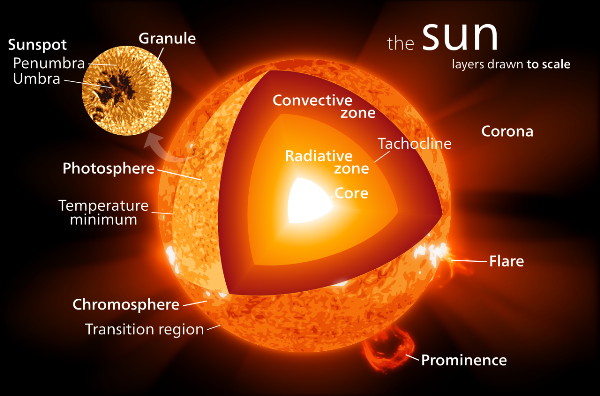
The primary source of energy in the Sun, nuclear fusion is the release of energy that happens when the atomic nuclei of lighter elements fuse together into heavier ones. Nuclear fusion, unlike our current terrestrial source of nuclear power — nuclear fission — involves no radioactive waste and no threat of a meltdown. Both the products and reactants of nuclear fusion processes are expected to be clean and pose no threat of a runaway, uncontrolled reaction.
Couple that cleanliness and safety factor with the incredible efficiency of nuclear power — multiple times as energetic per kg as fission and thousands of times more efficient than chemical sources — and it’s no wonder that it’s viewed as the holy grail of energy. The principle behind nuclear fusion is incredibly simple.
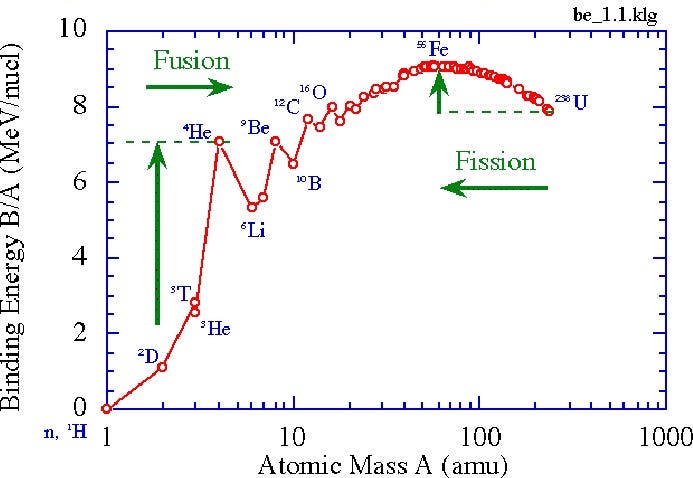
The most stable element in the periodic table is Iron-56 (or Nickel-62, depending on how you measure stability). If you have an element that’s significantly more massive than those, you can generally cleave it apart, producing lighter, more stable elements, and releasing energy: that’s nuclear fission. (For some elements, that process is so energetically favorable that it occurs spontaneously: that’s radioactivity!)
Fusion is just the opposite: taking lighter elements and joining them together, creating more stable elements and releasing energy. We should note that the Sun takes protons and — in a chain reaction — builds them up into Helium-4, which converts about 0.7% of the total original mass into energy via E = mc^2. While this isn’t all that much for a single atom’s reaction, when you realize that 10^38 protons do this in the Sun every second, it adds up to a tremendous release of energy: a total of 4 × 10^26 Watts of continuous power!

So how do we make it happen — in a controlled fashion (not like this) — on Earth? There are three approaches generally taken towards this goal: either using lasers to ignite fusion via inertial confinement, using a high-energy plasma with strong magnetic fields to ignite it, or using a composite, hybrid method known as magnetized target fusion.
But these methods all require very high energies and temperatures. Although fusion has been achieved many times, we’ve never reached the breakeven point: where more usable energy was released during the reaction than was inputted into the reaction to get it going and sustain it in the first place. Reaching and passing the “breakeven point” is the ultimate goal of fusion research.
What some people are looking for is a way to do this at lower temperatures and at energies closer to room temperature. If you can vastly lower your input energy, even a modest output of energy could represent a huge net gain! Rather than millions of degrees, they’re looking at temperatures no higher than thousands. These are people looking for some type of low-energy nuclear reaction (LENR), or — as it’s more commonly called — cold fusion.
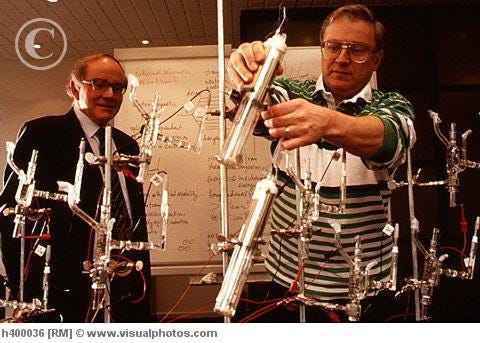
Those of you who know your history may remember back in 1989 that a team of scientists — Fleischmann and Pons — claimed to have achieved nuclear fusion at room temperatures through an electro-chemical process: cold fusion. This would be fantastic, of course, because it would mean that huge energy outputs (on the nuclear scale) could be achieved with only small energy inputs (on the electro-chemical scale, which is about 100,000 times lower), a clearly revolutionary discovery!
Unfortunately, their results were hugely flawed, and their experiments were not reproducible, and cold fusion is now synonymous with ideas like perpetual motion machines: very appealing promises of virtually limitless energy, but that are unfortunately physically impossible.
But that may be too harsh. While perpetual motion machines would violate known physical phenomena — like the conservation of energy — cold fusion is possible in principle. If we go back to the Sun, where nuclear fusion definitely occurs, it isn’t like the temperatures there are sufficient to cause the individual nuclei to overcome their mutual electric repulsion and fuse together. Instead, something else remarkable happens to the two nuclei that are about to fuse: their wavefunctions overlap and they quantum mechanically tunnel into a more stable, fused state!

This actually does happen at low temperatures to hydrogen under the right conditions: if you replace the electron normally in an atom with a muon! Because a muon is just like an electron but 207 times heavier, a muonic-hydrogen atom is orders of magnitude smaller than normal hydrogen. Put a few of them together, and their wavefunctions will overlap enough to spontaneously fuse! Unfortunately, muons are themselves high-energy, unstable particles with a mean lifetime of just 2.2 microseconds.
The combination of the energy barrier of normal matter, the Coulomb barrier of individual nuclei, the negligibly low probability of quantum tunneling at all but the shortest distances, and the fact that the physics of nuclear reactions is so incredibly well-understood (and verified) all tells us that low-energy cold fusion should be impossible. All good science is repeatable: set up an experiment, tell me how you did it, report your results, and with the proper equipment, I should be able to set up a similar experiment, do the same things you did and get the same results. If I can’t, and others can’t, you didn’t do good science. And I say this to point out one simple fact: there have been claims of cold fusion, but none of them have ever stood up under the scrutiny of the above definition of good science.

This goes back to the 1980s, and includes the 1990s, 2000s, and — most recently with Andrea Rossi — the 2010s.
One easy red flag you should always look for is ionizing radiation, a by-product of all nuclear reactions that we’ve ever discovered. If your alleged fusion (or, for that matter, fission) device isn’t producing any, you don’t have a nuclear reaction occurring: the energy differences are simply too great between nuclear states.
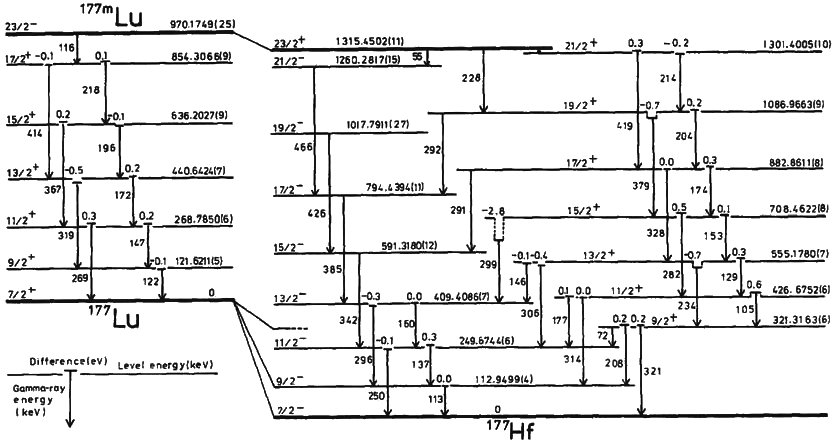
Even though I’m a theoretical physicist myself, I’m open to the possibility that physics has it wrong, and that cold fusion could be possible; a single reputable, repeatable and verifiable experiment will change my mind on this account. But until that day comes, the default assumption is that anyone who’s claiming to have cold fusion is some combination of either unethical or incompetent. The ethical, incompetent person will fool themselves, but then their experiment will not be repeatable or verifiable; this was the problem with the Fleischmann and Pons work. But the unethical person, whether competent or not, will try to fool you, knowing full well that their claims are without merit.
So if you haven’t looked at the most recent analysis of the latest cold fusion claim, keep all this in mind and go read it. And if you ever come across one again, make sure you demand a repeatable, independently verifiable reproduction of the results. Otherwise, you’re likely to not only fool yourself, but to be fooled by someone whose sole intent is to do exactly that.
Be as appropriately skeptical as the science tells you to be.
Leave your comments at the Starts With A Bang forum on Scienceblogs!

